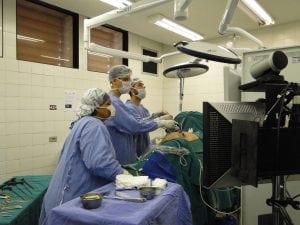Barrett’s esophagus is a condition in which the esophagus, or the tube that connects the mouth to the stomach, becomes damaged, typically due to long-term exposure to stomach acid; this condition is common in people with gastroesophageal reflux disease (GERD). It is normal to monitor Barrett’s esophagus as it is a precursor to esophageal adenocarcinoma, a form of esophageal cancer. According to Medical XPress, improving Barrett’s esophagus screening methods could play a significant role in improving esophageal cancer diagnosis.
Postendoscopy esophageal adenocarcinoma (PEEC) and postendoscopy esophageal neoplasia (PEEN) refer to two forms of cancerous esophageal changes that occur following a normal endoscopy. People first have an unconcerning endoscopy, but cancer has developed before their next scheduled procedure. These typically occur in people with newly diagnosed Barrett’s esophagus. But why does this happen and how can diagnostic measures reduce PEEC and PEEN rates?
In research published in Gastroenterology, a team from the University of Colorado Cancer Center sought to understand how to improve Barrett’s esophagus screening and surveilling. Their goal was to assess the magnitude and time trends of PEEC and PEEN within this population. To begin, the team launched a population study where they examined data from 20,588 people with newly diagnosed Barrett’s esophagus over a 14-year period. They found that many people were diagnosed within one year following an upper endoscopy that produced no results.
Moving forward, the team suggests improved diagnostic and endoscopic screening. They say that, if a Barrett’s esophagus is identified, doctors should take the time to collect meaningful samples and use high-quality equipment to perform the screening.
About Esophageal Cancer
Surgery, radiation, targeted treatment, and radiation may all be used in the treatment plan for esophageal cancer. More therapies are also being explored in clinical trials. Currently, the overall 5-year survival rate for esophageal cancer sits at around 20%. Finding new therapies that overcome current treatment barriers can help those affected live longer, healthier, and happier lives.
This rare cancer comprises only 1% of all U.S. cancer diagnoses each year. Esophageal cancer normally forms in the cells that line the esophagus before spreading outward. There are multiple esophageal cancer subtypes, such as adenocarcinoma, squamous cell carcinoma, choriocarcinoma, and sarcoma, among others.
Male individuals are more likely to develop esophageal cancer than females. Living in an industrialized area, having acid reflux, obesity, excessive alcohol consumption, smoking, and GERD all increase the risk of developing this cancer. In early stages, those affected may show no signs or symptoms. As the cancer progresses, symptoms may include:
- Unintended weight loss
- Chest pain or pressure
- Indigestion
- Hiccups
- Chronic cough that may produce blood or mucus
- Vomiting that may produce streaks of blood
- Difficult or painful swallowing
- Heartburn
- Hoarseness
- Esophageal obstructions







